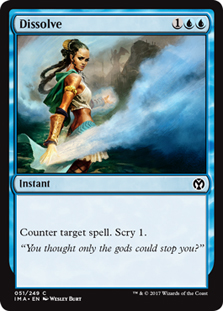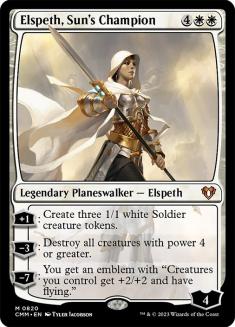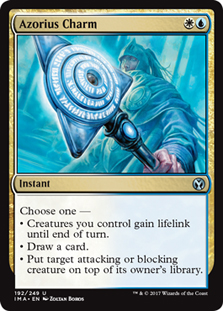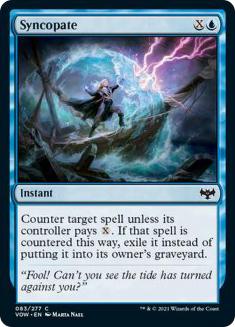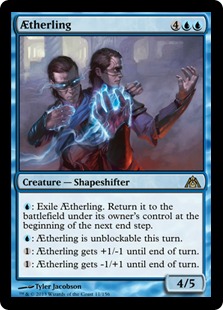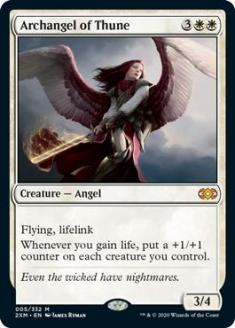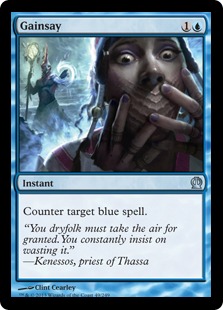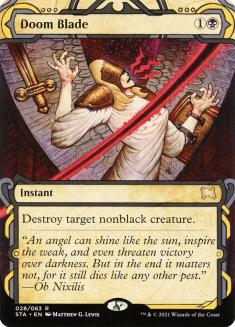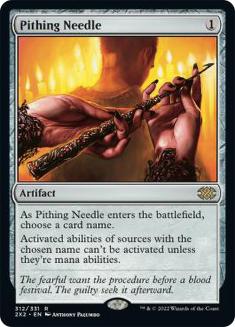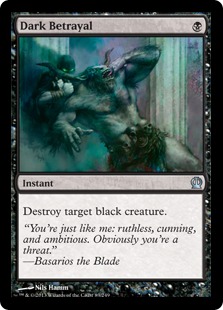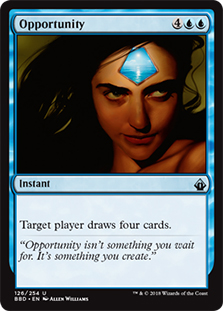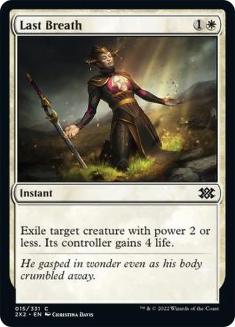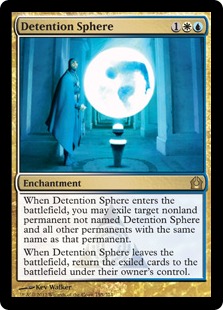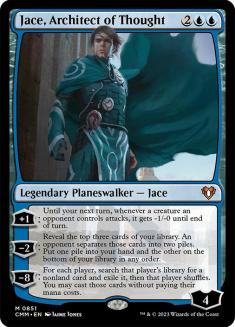The holidays are finally over, and with them go the three-week forced hiatus of competitive tournament Magic.
A lot has happened since my last article, but let’s start here:
This is my fault.
To Cedric, I apologize, and to the 38,220 people who have enjoyed watching this GIF on repeat for the past ten days, I say this: please make all checks payable to Harry B. Corvese Jr. or find me on Facebook/Twitter.
For those not in the know, Cedric made a bold statement while covering a match of Legacy two weekends ago regarding my ability to win a game of Magic after constructing the following scenario:
Turn 1 Blood Moon on the play.
Some turns later draw Sneak Attack.
Some turns later draw an Emrakul, the Aeons Torn, forcing my opponent to fall to five life and sacrifice the six nonbasic Mountains he had in play.
Cedric snap declared that if I lost this game he would do a cartwheel.
Three hours later, his cartwheel was on video.
I feel it’s safe to say that on this day both Cedric and I “fell down and went boom.”
Saito Strategy
As SCG Open Series: Orlando was winding down, I came across the following tweet:
Finished My PTQ 3days, 6-3 and 2nd&3rd prace with this deck. total score was 22-6-2(ID) Bad macth up is BIG RG only. pic.twitter.com/Mh4MyMs6JA
— TomoharuSaito (@TomoharuSaito) January 13, 2014
Since I’m always a fan of new and interesting ways to cast the card Supreme Verdict, there were a few things that I really liked about this deck.
1. I loved the firm declaration that Syncopate is a good card. I have always relied on the much-maligned “bad counterspell” as a two-mana answer to three-mana problems (Thassa, God of the Sea and Underworld Connections), and I was pleased to see another player of reputable intelligence feels the same way.
2. With three Mutavaults of our own to go along with the playset of Last Breath, we’ve got the once-serious Mutavault against control problem locked down. The work Last Breath does against Nightveil Specter, Master of Waves, and the aggressive decks is just gravy.
3. This mana base gives us the best of both worlds by letting us play enough scry lands that we feel we’re not being left out from the cool new trend of peeking at the top of our library a few times per game while still having enough basic lands to cast our spells on time.
4. I was very impressed with the sideboard plan and considered myself willing to go back to a more threat-heavy style of control. The Dark Betrayals seemed like they worked, and I understood how much they would help take strain off the workload of cards like Supreme Verdict and Detention Sphere in the Mono-Black Devotion matchup.
I decided to stick around the Philadelphia area this past weekend instead of driving seven hours to the Open Series in Columbus mostly because there were also back-to-back PTQs an hour from where I was staying. One of them happened to have $5,000 in additional prizes added, so I was sold.
I registered the following 75 cards:
Creatures (1)
Planeswalkers (7)
Lands (27)
Spells (25)
- 4 Last Breath
- 3 Syncopate
- 2 Azorius Charm
- 4 Supreme Verdict
- 4 Detention Sphere
- 4 Sphinx's Revelation
- 4 Dissolve
Sideboard

I replaced the Opportunity with a Pithing Needle because in some of his follow-up tweets Saito identified it as the weakest card in the deck and said that the slot was for Mono-Black Devotion and control. Pithing Needle is useful in control mirrors mostly as the only way to deal with a resolved Aetherling that I know of while helping out Detention Sphere with Pack Rat; Underworld Connections; and Erebos, God of the Dead against Mono-Black Devotion.
After losing round 1 of the first PTQ to Mono-Blue Devotion and my own inexperience with the card Archangel of Thune, I rallied with eight straight wins before losing to Mono-Blue again in the semifinals. I don’t think I had the correct plan for sideboarded games in these matches, but the loss in the semis was nothing short of a blowout. My opponent went on to win the tournament, which marks the second time in the past three months that I can regale you with the tale of being stiff armed right out of the way of someone’s date with destiny in the semifinals of a PTQ.
Yuck! My mouth is caked with salt. #salty
I ran the same 75 cards back for the Sunday PTQ in Havre de Grace, Maryland (totally cool store down there called Washington Books by the way—I explored the shop/labyrinth dutifully between every round and hadn’t run out of things to look at by the time the day was over) and finished 5-2.
My first loss came in round 2 to a control mirror because of mulligans and lands. My second loss was in round 6 to Mono-Red Aggro, which led me to a conclusion about the deck and transitions nicely to my updated sideboard guide for this weekend in Baltimore:
I really don’t like Soldier of the Pantheon.
Updated Sideboard & Guide For #SCGBALT
4 Archangel of Thune
3 Gainsay
3 Dark Betrayal
3 Doom Blade
1 Pithing Needle
1 Opportunity
Soldier of the Pantheon’s best application is against the G/W Aggro deck popularized recently by Andrew Shrout, where it’s very good. However, the card is just miserable against Mono-Red Aggro, where it usually just eats a burn spell or gets outclassed by Ash Zealot or Chandra’s Phoenix. Doom Blade is a card that’s able to answer some very big problems from G/R and R/W Devotion while still being good against G/W Aggro, Mono-Blue Devotion, and Mono-Red Aggro.
Mono-Blue Devotion
Out:
In:
Archangel of Thune continues to be a card that Mono-Blue Devotion has a very tough time dealing with. The best answers are Cyclonic Rift and Domestication, which are heavily reliant on the blue player already having a board presence in order for them to be effective. The Gainsays and Doom Blades are mana-efficient one-for-one answers to almost every problem you’ll face, while the Pithing Needle answers some more obscure issues like somehow not having an answer for Mutavault, Thassa making things unblockable to get around an Archangel of Thune, or sometimes even Aetherling out of the board.
It may seem odd to board out so many of the counterspells while boarding in Gainsay, but the issue really is cost. Having the ability to answer what’s happening on the board while still having hard-counter backup is one of the moments that can really turn a corner for the control player, and Gainsay allows you to do that as early as turn 5 or 6. I keep the Syncopates over the Dissolves for the times when they show up in my opening hand on the draw and I need to counter a three-mana card like Thassa, God of the Sea or Nightveil Specter.
Mono-Black Devotion
Out (on the play):
Out (on the draw):
In:
Getting some of the countermagic out of the deck is important just because of how much better they make cards like Thoughtseize and Duress. The game will quickly become a topdeck war, and counterspells off the top are the worst when you’re dying on board. I still like to keep some number of them around though just because of how important it is to be able to answer problem noncreature permanents and to take some of the stress off of Detention Sphere.
U/W/x Control
Out:
In:
These control mirrors are all about the numbers. Post-board we are going up to nine very large and immediate threats and ten counterspells. You may have to play with your Supreme Verdict or Detention Sphere numbers depending on how your opponent chooses to try to out-threat you. If you find yourself needing to do so, the next cards on the chopping block are another Detention Sphere (unless you’re afraid of Assemble the Legion) and the two Azorius Charms.
Mono-Red Aggro
Out:
In:
Counterspells are bad against aggro decks the same as they always have been because cheap threats get into play underneath them. This time however we have some six-mana idiots clunking up our draws that we also need to get out of the deck, so two Syncopates remain behind to see what kind of work they can do. They’re awful off the top and average in your opener, but if you hit a Chandra’s Phoenix with one, you can feel free to snap your fingers a few times.
If you have a ton of red in your local metagame, you’ll need to do something more about this matchup. The good news is Fiendslayer Paladin is available; once you get him going, the match can feel like a cakewalk.
G/R Monsters
Out:
In:
This was the matchup that Saito proclaimed to be the worst for the deck. I think that it can be a difficult pairing, but if you’re up to the task of keeping hands and playing in such a way that you don’t get blown out by planeswalker-heavy draws, it can be very even. Doom Blade shines as a way to handle Stormbreath Dragon, and the full amount of counterspells is left in to help in that regard as well as with planeswalkers. Last Breath can eat some mana guys but I generally find it best to ignore those and deal with what matters.
Elspeth, Sun’s Champion has proven to be more than enough to beat the G/R deck for me, but if you want your Aetherling back, you could cut that other Azorius Charm. Archangel isn’t great to rely on because of how big the monsters are in addition to Stormbreath Dragon having protection from white, but sometimes if you stick her onto a board of 2/2s attacking you, she can be good. She fights a planeswalker pretty well too.
G/W Aggro
Out:
In:
This matchup is probably still very difficult, but I somehow don’t see that much of it around. Archangel isn’t the end all and be all the way she is in some other pairings but is still a very good card to have. Doom Blade is the benchmark for efficient removal against this type of deck and should always remain pretty good. There are definitely some draws that are going to crush you if you’re struggling to keep up, but I think this build is better suited to fight G/W than any version that came before.
R/W Devotion
Out:
In:
The Archangels and Doom Blades are back for more fun, but this time we’re changing a few things about what’s left behind. Four counterspells are left in because their deck has a tendency to play big problem permanents like Purphoros, God of the Forge and Assemble the Legion. In addition to the need to counter Stormbreath Dragon, this makes the countermagic quite useful—but not so much that we want to take up seven slots. Jace, Architect of Thought is a much easier cut than against red aggro decks though because red-based devotion decks don’t usually swarm you with early two-power creatures.
Though playing in two PTQs was fun last weekend, I’m headed back to grind some more Open Series Points this weekend in Baltimore. And while there I plan to discover whether or not freezing wind over the Baltimore Harbor really can peel the skin off of my face. If anyone has suggestions on how to best enjoy Baltimore without going outside even once, please feel free to share them with me!


